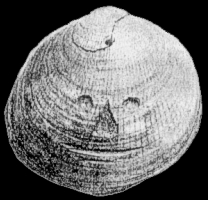 Cross posted @ God Is For Suckers!
Cross posted @ God Is For Suckers!
In the wild wacky world of religion, I come across these obscure oddities that make one squint the eyes, cross them, and then roll them to the ceiling.
Such a one is the Jerusalem Syndrome.
The Wiki entry says this:
The Jerusalem syndrome is the name given to a group of mental phenomena involving the presence of either religiously themed obsessive ideas, delusions or other psychosis-like experiences, that are triggered by, or lead to, a visit to the city of Jerusalem. It is not endemic to one single religion or denomination, but has affected Jews and Christians of many different backgrounds.
(Do note the absence of Muslim, Hindu, or other denominations.)
There are three types listed:
Type I
Jerusalem syndrome imposed on a previous psychotic illness. This refers to individuals already diagnosed as having a psychotic illness before their visit to Jerusalem. They have typically gone to the city because of the influence of delusional religious ideas, often with a goal or mission in mind which they believe needs to be completed on arrival or during their stay. For example, an affected person may believe himself to be an important historical religious figure, or may be influenced by important religious ideas or concepts (such as causing the coming of the Messiah or the second coming of Christ).
Type II
Jerusalem syndrome superimposed on and complicated by idiosyncratic ideas. This does not necessarily take the form of mental illness, and may simply be a culturally anomalous obsession with the significance of Jerusalem, either as an individual, or as part of a small religious group with idiosyncratic spiritual beliefs.
Type III
Jerusalem syndrome as a discrete form, uncompounded by previous mental illness. This describes the best known type, whereby a previously mentally balanced person becomes psychotic after arriving in Jerusalem. The psychosis is characterized by an intense religious character and typically resolves to full recovery after a few weeks, or after being removed from the locality. It shares some features with the diagnostic category of a 'brief psychotic episode', although a distinct pattern of behaviours has been noted:
- Anxiety, agitation, nervousness and tension, plus other unspecified reactions.
- Declaration of the desire to split away from the group or the family and to tour Jerusalem alone. Tourist guides aware of the Jerusalem syndrome and of the significance of such declarations may at this point refer the tourist to an institution for psychiatric evaluation in an attempt to preempt the subsequent stages of the syndrome. If unattended, these stages are usually unavoidable.
- A need to be clean and pure: obsession with taking baths and showers; compulsive fingernail and toenail cutting.
- Preparation, often with the aid of hotel bed-linen, of a long, ankle-length, toga-like gown, which is always white.
- The need to shout psalms or verses from the Bible, or to loudly sing religious hymns or spirituals. Manifestations of this type serve as a warning to hotel personnel and tourist guides, who should then attempt to have the tourist taken for professional treatment. Failing this, the two last stages will develop.
- A procession or march to one of Jerusalem's holy places.
- Delivery of a ‘sermon’ in a holy place. The sermon is usually very confused and based on a plea to humankind to adopt a more wholesome, moral, simple way of life.
Bar-El et al. reported 42 such cases over a period of 13 years, but in no case were they able to actually confirm that the condition was temporary.
Of course, the religious among us will point to this as some sort of proof positive of the spiritual world, but in fact, this sort of item occurs in the case of the Stendhal Syndrome or the Paris Syndrome. Usually the latter tend to be spectacularly less...violent.
I have discussed elsewhere the fact that we as a species do indeed tend to have hallucinations - it seems to be in our blood (to beg a metaphor).
There's a citation here, about one Michael Rohan (yes, you guessed a-right - he was Christian), who
was overwhelmed with a feeling of divine mission and was apparently intent on starting Word War III in order to bring about the coming of the Messiah. He set fire to the al-Aqsa Mosque and caused minor damage. This act precipitated citywide rioting and threats of holy war (Jihad) that were broadcast on virtually every Arab language radio station in the Middle East.
X-Project magazine states:
Although the Jerusalem Syndrome affects many that have a history of psychiatric problems, many who experience the same delusions are sane, healthy and successful businessmen, teachers, and professionals. The Syndrome usually affects Protestant Christians, but it has also been reported in religious Jews and in rare cases, Catholics. Usually lasting about a week, most can be brought back to reality (with help) and have no memory of their short-lived Biblical persona.
The most obvious cause of the Jerusalem Syndrome is religious fanaticism. The fact that it only affects Christians and some Jews suggests that subjects are prone to feeling a desire to be "called of God" and may interpret impressions and feelings that they get from touring the city as an actual Godly summons.
One of the more controversial theories suggests that the Jerusalem Syndrome has been around before Christianity, and may have actually contributed to the founding of the religion. This theory suggest that historical Bible figures such as John the Baptist, the apostles, and even Jesus Christ were affected by the syndrome. This, however, does not provide an explanation as to the origins of such phenomenon.
The Jerusalem Syndrome is not entirely exclusive to Jerusalem. All over the world, many people forsake otherwise ordinary lives to live out a Bible-hero persona.
The Savvy Traveler states that this is a very real problem, and relates an interesting anecdote:
Bar-El talks about a memorable case which actually led to one of the first instances of collaboration between Palestinian and Israeli police. The Palestinians found a man without clothes, money or ID, and, after interrogation, they figured out he wasn't a security risk. They had no idea what to do with him, so they contacted an Israeli officer. The Israeli asked only one question: "Is the guy really completely nude?" "No," answered the Palestinian, "he's wearing an animal skin." "Oh," said the Israeli, "you've got another John the Baptist." It was the sixth John the Baptist the Israelis had run into. They usually did days of purification between Jerusalem and the Galilee before ending up at the Jordan River to baptize Jesus or the first Christians, and part of the trek was through Palestinian territory.
John The Baptist is the most popular Jerusalem syndrome choice for Christian men. Christian women prefer the Virgin Mary. For Jews of both sexes, the identification is generally with the Messiah.
My best guess is that it's something in the water, air, or food, that triggers some form of a chemical imbalance.
Everything.com reports that:
A strange little condition in which tourists to the holy city of Jerusalem start to believe they are biblical characters, or of biblical importance. About 100 people a year get this disorder, with about 40 actually needing hospitalization. Currently, all patients go to Dr. Yair Bar-El at Jerusalem's psychiatric hospital Kfar Shaul.
M. Kalian and E. Witztum report about 1/2 of that number, out of an average of 2 million tourists annually. In fact, the numbers appear to vary.
The thought of all these faux Johnny Baptists running about unfettered is more than a little unsettling. While the numbers seem less than alarming, recall Rohan, who set off riots by burning mosques.
Perhaps more investigation into this phenomenon would provide us with key insights as to the psychological anomalies that pertain to the religious.
And history tells us, that one person in the right place and the right time can set ablaze a countryside with a single spark of madness.
Till the next post, then.














